YAMAHA RD350B
Owned for 48 years, Mark Ship’s early RD350B has been toured, raced, crashed, stripped and rebuilt, but retains its authentic aura – right down to the ‘bacon slicer’ front numberplate
WORDS JIM MOORE PHOTOGRAPHY JASON CRITCHELL
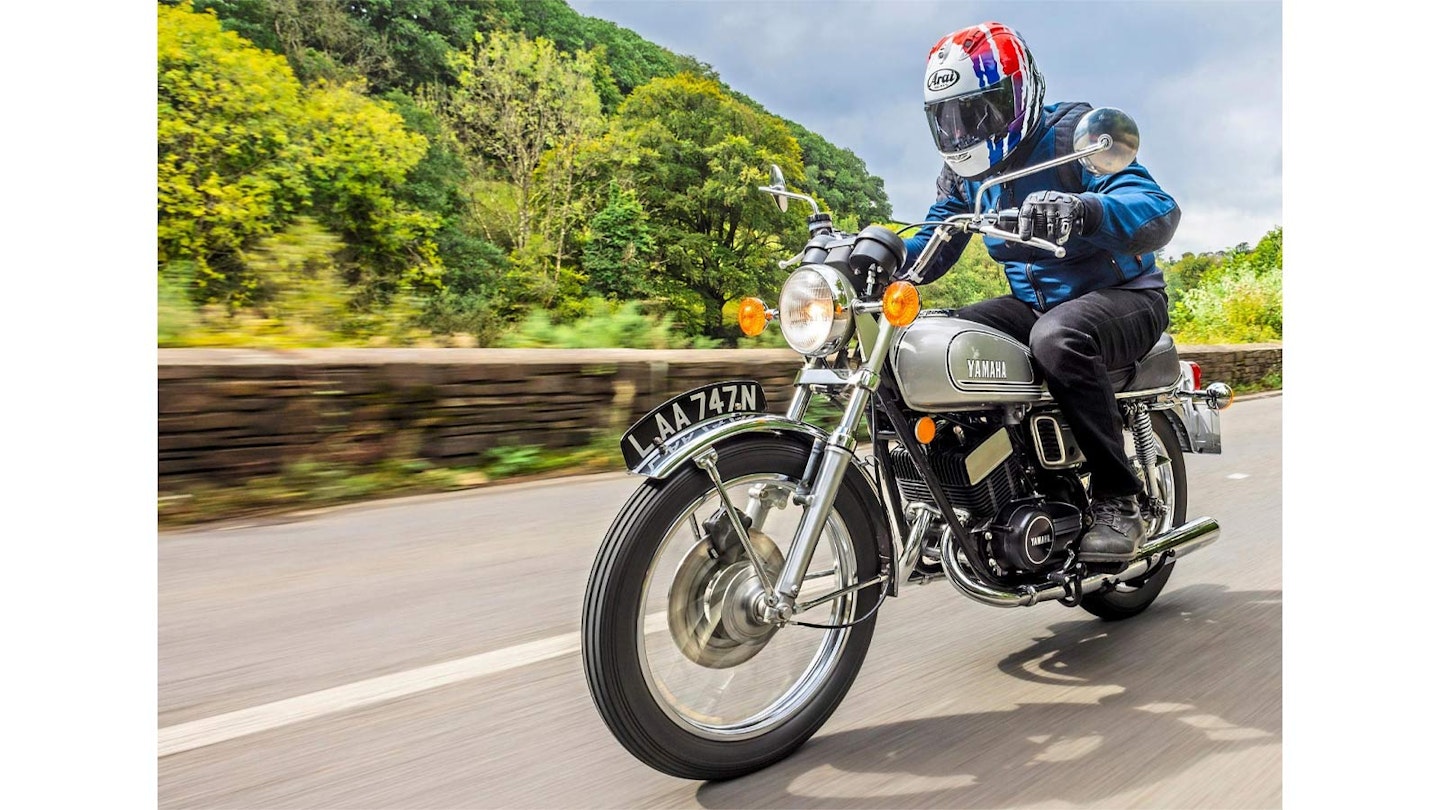
Mark Ship has a remarkable connection to his Yamaha RD350B. It began back in 1977 when, aged just 17, he stepped up from a mundane Honda CB250 to the RD – his first two-stroke, having started out on an SS50.
“The extra performance, compared to that of the CB, was a bit of a shock. Twice the power in one hit. As surprises go, it was a really good one,” remembers Mark, with a wry smile. And it left enough of an impression for the pair to remain together for the next 48 years (and counting), despite almost 30 other bikes passing through Mark’s hands in that time.
Since 1977, the RD’s been toured (around Cornwall with his mates in the late ’70s, complete with top box), tuned, raced, crashed, repaired, stripped, boxed-up and taken through six house moves, before finally being brought back to a splendour reminiscent of how it looked when Mark bought it off a mate almost five decades ago. As you’d expect, Mark knows his RD inside out. His knowledge of mid-’70s Yamaha two-stroke twins borders on the obsessive, adding an extra layer of authenticity to the bike’s restoration.
“See that?” says Mark, pointing at the front mudguard. “That’s specific to early ’75 bikes like mine. This was one of the first 350Bs in the UK; the original owner told me he was asked to take it back to the dealer after he’d bought it, so it could be inspected by Japanese technicians – that’s how early in the run it was. Anyway, when I first started riding the 350 a couple of years later, I was advised by a copper to remove the front plate because by then they were deemed dangerous.”
Serendipitously, Mark bought a later mudguard when he took the RD racing because, as he puts it: “I just knew the original mudguard was rare, so I wrapped it up and stored it in the loft for later”. Little did he know that ‘later’ would be 45 years ahead in the future...

Unchanged
The silver spark plug caps are the original Nippon Denso items. All the bolts in the engine are original – very usual for a ’70s resto
Wiring
The original wiring loom was getting quite tired, so Mark found a new old stock loom to go on the bike. “I still have the original, though.”
Brakes
Mark ground the brake discs back to smooth, but he thinks the front is a replacement NOS part he bought.
In between bombing around the lanes of south-west England, riding to work and generally enjoying the addictive kick of a lightweight stroker, Mark took to the track with the North Gloucester Racing Club, again on the RD. “I did two or three seasons – 1978 to ’80, if I remember right – because by the end, LCs were making their mark and my 350 just wasn’t competitive against them or the later RD400s.
“Our bikes were supposed to be standard, but we all knew everyone was running tuned engines, so I ported the 350 myself – the tricks were to cut the backs out of the pistons, open up the transfers and enlarge the exhaust port. I widened the exhaust port rather than taking material off the top, because that would’ve made it too peaky.
“I fitted a larger airbox from an earlier model, too. Back in the mid-’70s, because of the fuel crisis, Yamaha tried to make these 350s more fuel-efficient by fitting smaller airboxes. That worked against the porting I’d done, so the original had to go.”
Eventually, as LCs started joining the grids already brimming with tuned RD400s, it became harder and harder for Mark to be competitive on his 350B – even with the aid of home fettling, a larger airbox and Ace bars that allowed him to tuck in as tightly as possible on the straights.


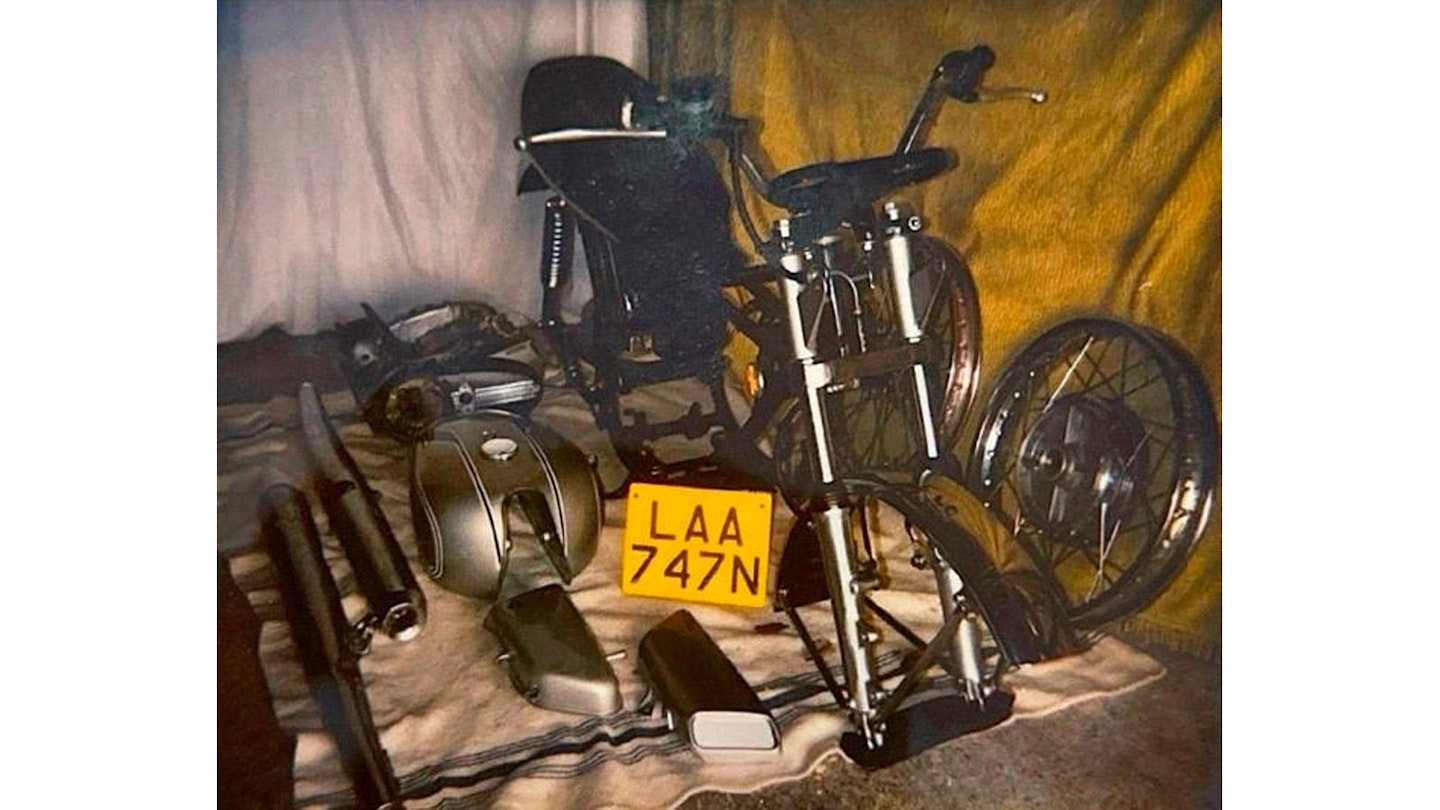
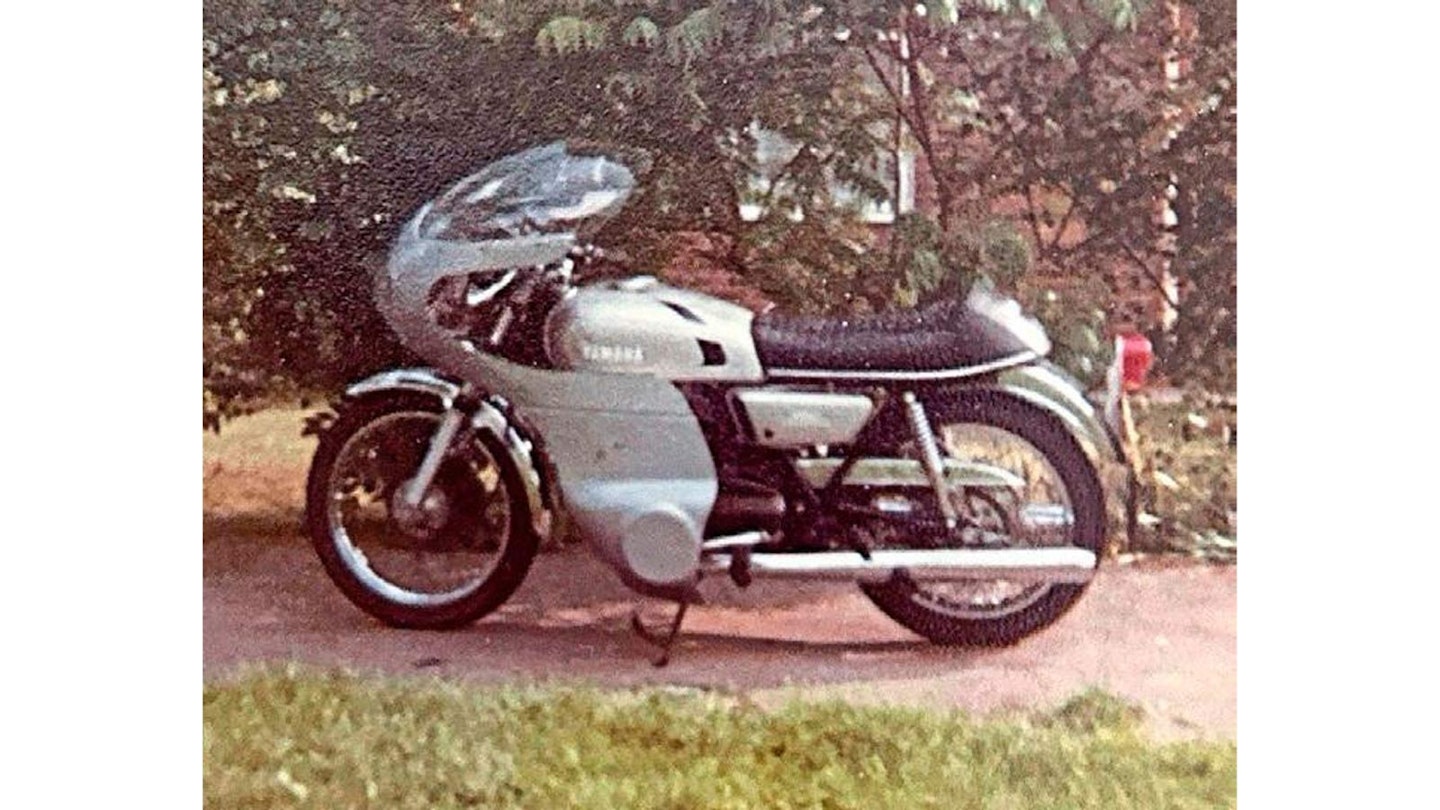
“At one meeting, I had a go on my mate’s Stan Stephens-tuned RD400, which was fast enough to take me from running midfield to battling with the LCs and 400s up front. After that, I bought an LC for racing and stuck the 350 back in the garage.”
Despite this, Mark never entertained the idea of selling the RD. In fact, he did the opposite – tracking down parts to replace those that’d been damaged during his time racing and by the odd incident on the road.
“I didn’t plan to start tidying the bike at a specific date,” explains Mark. “I was just picking up parts when I could. There was quite of lot of ’70s new old stock around at the time; it was only the early to mid-’80s, after all. I remember phoning Damerall’s Motorcycles [in Cornwall] to enquire about a pair of shocks. I ended up buying a fuel tank, because my original had been dented in a road spill. It’s gold dust now, because it’s original – the silver colour is in the lacquer, not the paint, so it’s hard to match. Plus you only get overspray on the underside. That’s how they left the factory – and that’s how I wanted the RD to be, once finished. It cost £150 – you’d barely get a tatty one for twice that now.”

The crash that dented the tank also bent the forks, so they were replaced at the time and received very little use before the bike was taken off the road and stripped. As a result, they still look new. As we stand chatting about crash repairs, Mark draws my attention to the brake caliper. “They’re like rocking horse shit,” he says, matter-of-factly. “It’s an opposed-piston caliper, the same as Yamaha fitted to the TZ250, 350 and 750. I tracked that down through Dennis Trollope Racing in Bristol; doubt if you’d find one now.”
Other parts took longer to find. The original exhausts were dinged and scratched. Mark eventually found a pair in a shop in Scotland. That was the early 1990s. Again, Mark knows the particulars: “Earlier pipes, like mine, were a bit longer. Only an RD anorak would know that.”
Mark’s on a roll now, pointing out specifics to the 1975 350B, like the rear UK mudguard which differs from the US part that features holes top and bottom for a different mounting bracket. And the lack of an inspection window on the rear drum – that was for later models only. Oh, and the tuning fork logos on the mirrors. “Finding this stuff nowadays is nigh-on impossible. I’m so glad I bought and stored the correct stuff when I did.”

The restoration has been something of a two-pronged process. Mark stripped the bike way back in the early 1990s and began painting and restoring components when he could. Being an engineer by trade and having a paint shop at work helped, allowing him to replicate a factory finish on the frame – “nothing’s powdercoated,” Mark’s keen to point out – and re-plate bare metal parts that had lost their original lustre.
Then the project stalled. Lugging a bike in bits and boxes through numerous house moves didn’t go unnoticed in the Ship household. Mark’s ever-patient wife Kristina suggested that the RD might never get finished, so perhaps it’d be better to sell it to someone who might actually complete the job. Mark wasn’t for turning, however, so they agreed upon a compromise that allowed him to rebuild it in the back room – a perfect solution, for a while...
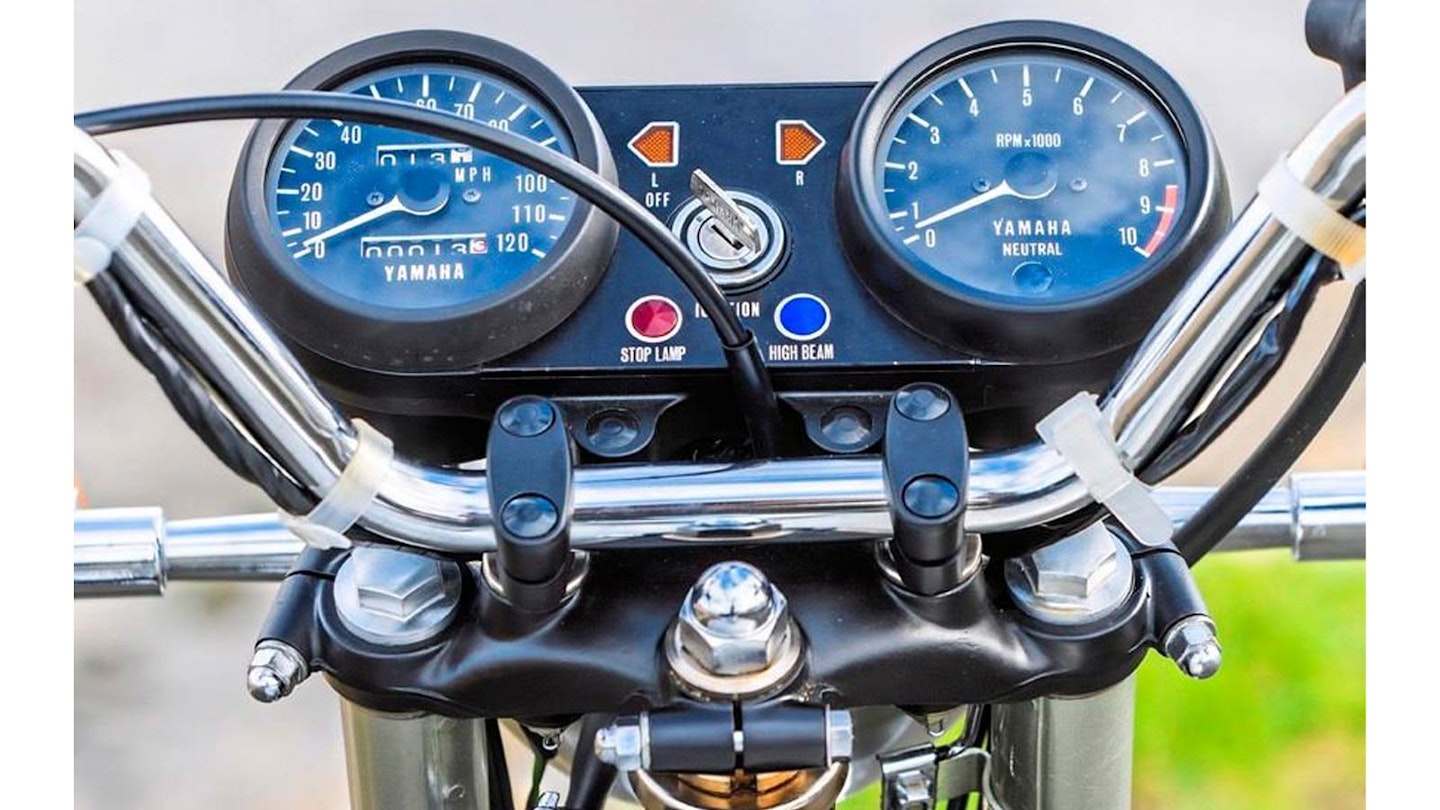
“As much as I wanted to put the whole thing back together, it became a physical impossibility,” says Mark. “I’ve got nerve damage in my back from a big racing crash years back – I ran off circuit at Castle Combe on the LC, got flicked over the banking and landed awkwardly – so working on the bike became harder and harder. It was a really tough thing to accept.”
Fortunately, locally renowned mechanic Kenny Langford – gaffer at Ace Motorcycles in Bude – loves a challenge. And a classic. “Working on Mark’s RD was really enjoyable, because most of the work had already been done – paint, plating, finding new parts,” says Kenny of his involvement. “I just put it back together.”
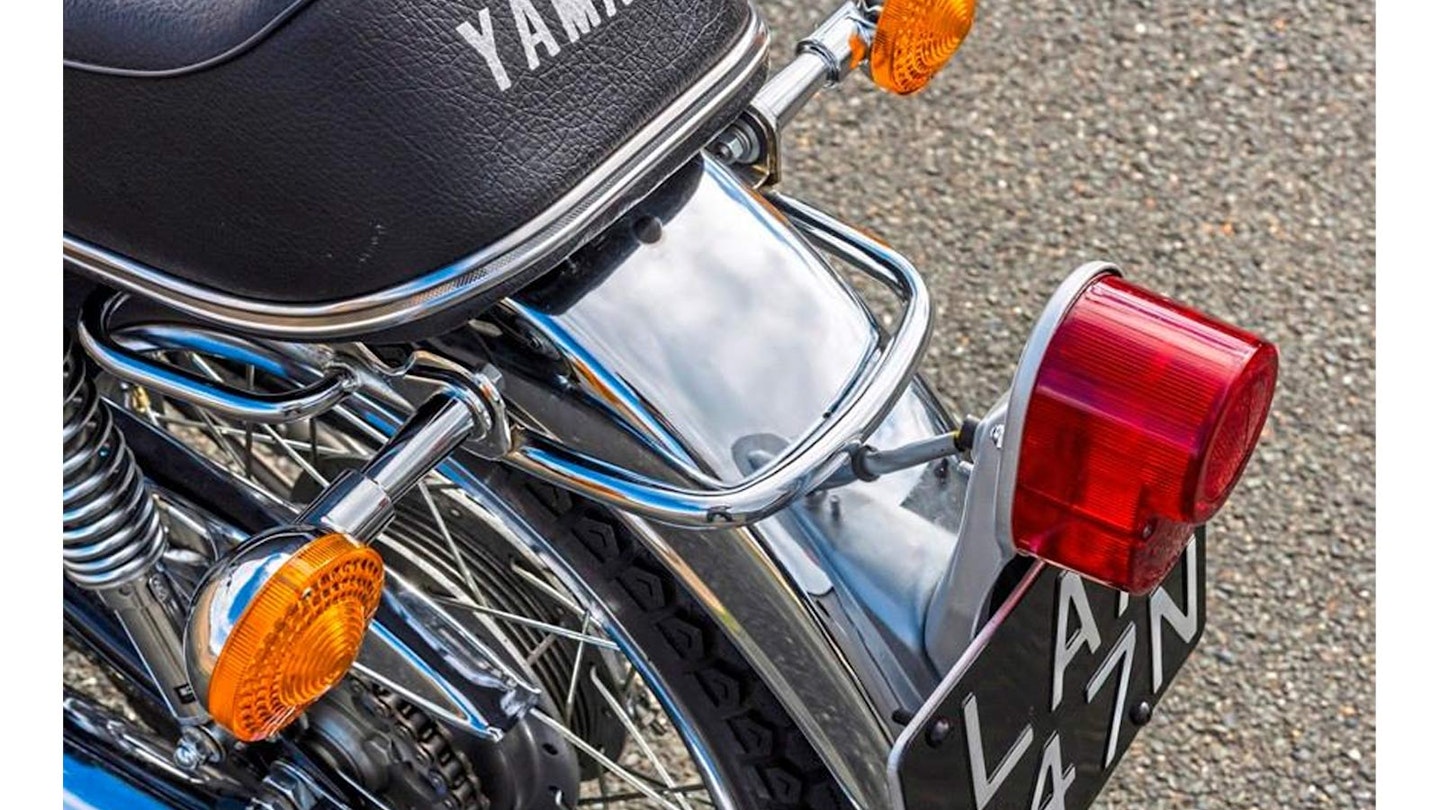
The engine was in remarkably fine fettle, having had a crank rebuild and a rebore in 1979. Despite seeing Mark through a further season-and-a-half on track, Kenny found the crank to be spot-on. “No float in it at all, mains and big-ends were all good too. It really helped that Mark filled the engine with two-stroke oil before storing it. Even the clutch is original.
“The only thing I’ve done is hone the bores and fit fresh rings. I did think the tuned barrels might be an issue, making it peaky, but it’s not – it’s got loads of torque thanks to Mark’s tune and works really well for road riding with the standard pipes. Mark sourced some standard barrels, at my recommendation, but there was no point fitting them, as it runs so well as it is.
“I really like how original the bike is, too,” continues Kenny. “Most 350 owners fitted electronic ignition back in the day, but this one’s still got its points set-up. For me, the most enjoyable part was setting it up, getting the fuelling and ignition timing bang-on. This one’s turned out really well. It’s so crisp and responsive, an absolute pleasure to ride.”
This is music to my ears. Having spent the past few hours chatting about everything Yamaha RD, I’m itching to swing a leg over Mark’s gleaming 350B. Kenny’s already warmed the top end through by the time I jump on board, so there’s no need to fumble about flicking off the choke switch as the RD whisks me away from Bude in search of a quiet road where I can stretch its legs.

Fuelling is spot-on – crisp and precise – just as Kenny promised, and the motor gets into its stride from as low as 4500rpm. The powerband’s wide and strong, with genuine two-stroke fizz from 5500rpm all the way to a peak of 8000rpm – bob-on for the rarely-straight roads in this part of south-west England. And thanks to Mark’s clever tune, its remarkably flexible for a modestly-sized stroker, too.
Unlike the later 400, this 350 runs only five gears in its gearbox – sixth is blanked off, so an extra ratio could be fitted. But there’s no need. Zipping along between 60-70mph with a bit in reserve is what this ’70s gem does best. The RD’s handling is of its time, however. Wide ’bars provide featherlight steering – a little too rapid at times, given that it can feel a touch skittish and nervous on its Cheng Shin tyres when pushed (a set of Avon Road Riders would provide more grip and control). Coupled with a bouncy ride, due to softly-sprung suspension, and a turning circle tight enough to do a 180° on a single-track lane, the whole thing feels like an enlarged moped. A rapid and devilishly fun one, mind.
Riding isn’t as easy for Mark these days, what with his nerve damage. Short blasts are possible; he’s got an SR400 as well – with, he says, a lighter clutch. But Mark gleans as much pleasure from the interest his RD350B receives when out and about (we were stopped numerous times by fellas in their fifties wanting to have a look and a chat about their old Yams) as he does in using it. That and the fact he’s resurrected a part of his youth that keeps on providing pleasure.
A remarkable connection indeed.
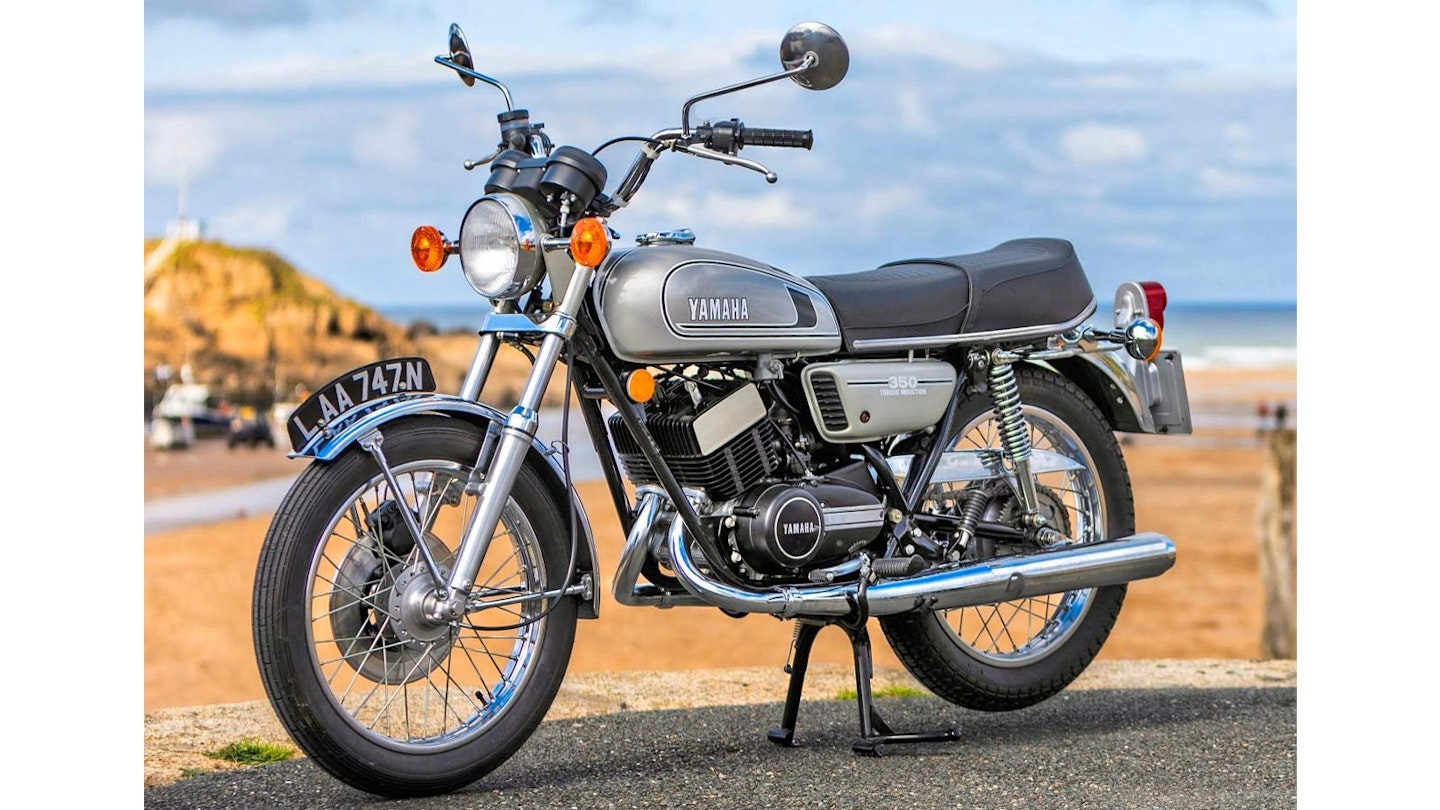
SPECIFICATION
1975 YAMAHA RD350B
ENGINE/TRANSMISSION
-
Type Air-cooled, reed-valve two-stroke parallel-twin
-
Capacity 347cc
-
Bore x stroke 64 x 54mm
-
Compression ratio 6.6:1
-
Carburation 2 x VM28 Mikuni
-
Ignition Breaker points
-
Primary/final drive Gear/chain
-
Clutch Wet multiplate
-
Gearbox Six-speed
CHASSIS
-
Frame Tubular steel cradle
-
Front suspension 34mm telescopic forks, non-adjustable
-
Rear suspension Twin shocks, adjustable preload
-
Front brakes 267mm (10.5in) disc, single-piston caliper
-
Rear brake 178mm (7in) drum
-
Wheels Spoked
-
Tyres 3.00 x 18 (F) 3.50 x 18 (R)
DIMENSIONS
-
Wheelbase 1320mm (52in)
-
Seat height 800mm (31.5in)
-
Fuel capacity 15.9 litres (4.2 gallons)
-
Wet weight 155kg (342lb)
PERFORMANCE
-
Power 39bhp at 7500rpm (claimed)
-
Torque 24.1lb ft at 7000rpm (claimed**)**
-
Top speed 102mph
Kenny’s essential tools
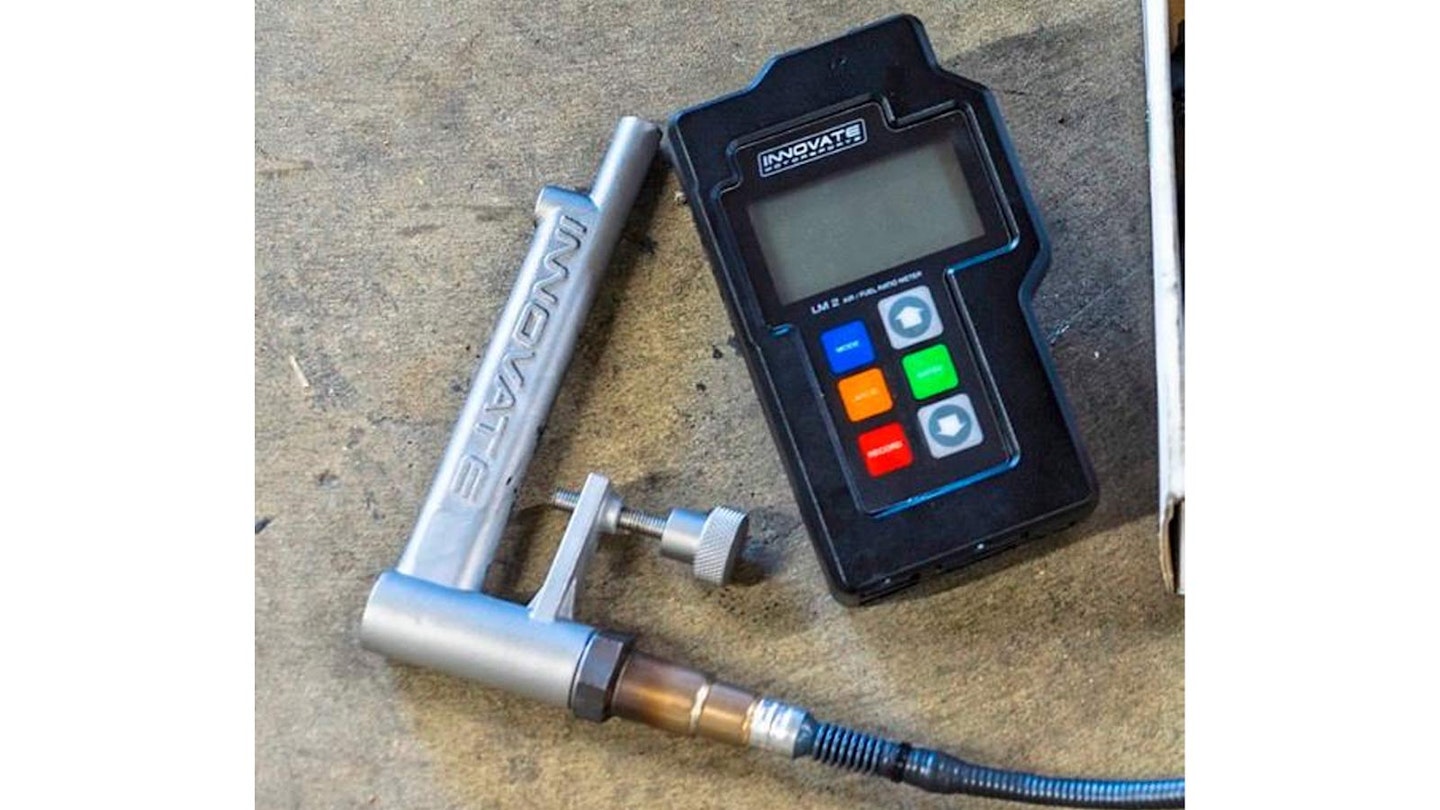
Innovate air/ fuel mixture gauge
“A great tool – it’s like a mobile dyno. Powered by a 12v battery pack, I can use it anywhere. You stick the probe down the exhaust, connect it to the throttle position sensor [on modern tackle only] allowing you to plot the bike’s fuelling through a PC, then make adjustments accordingly. Great for home mechanics, because it saves the cost of dyno time.”
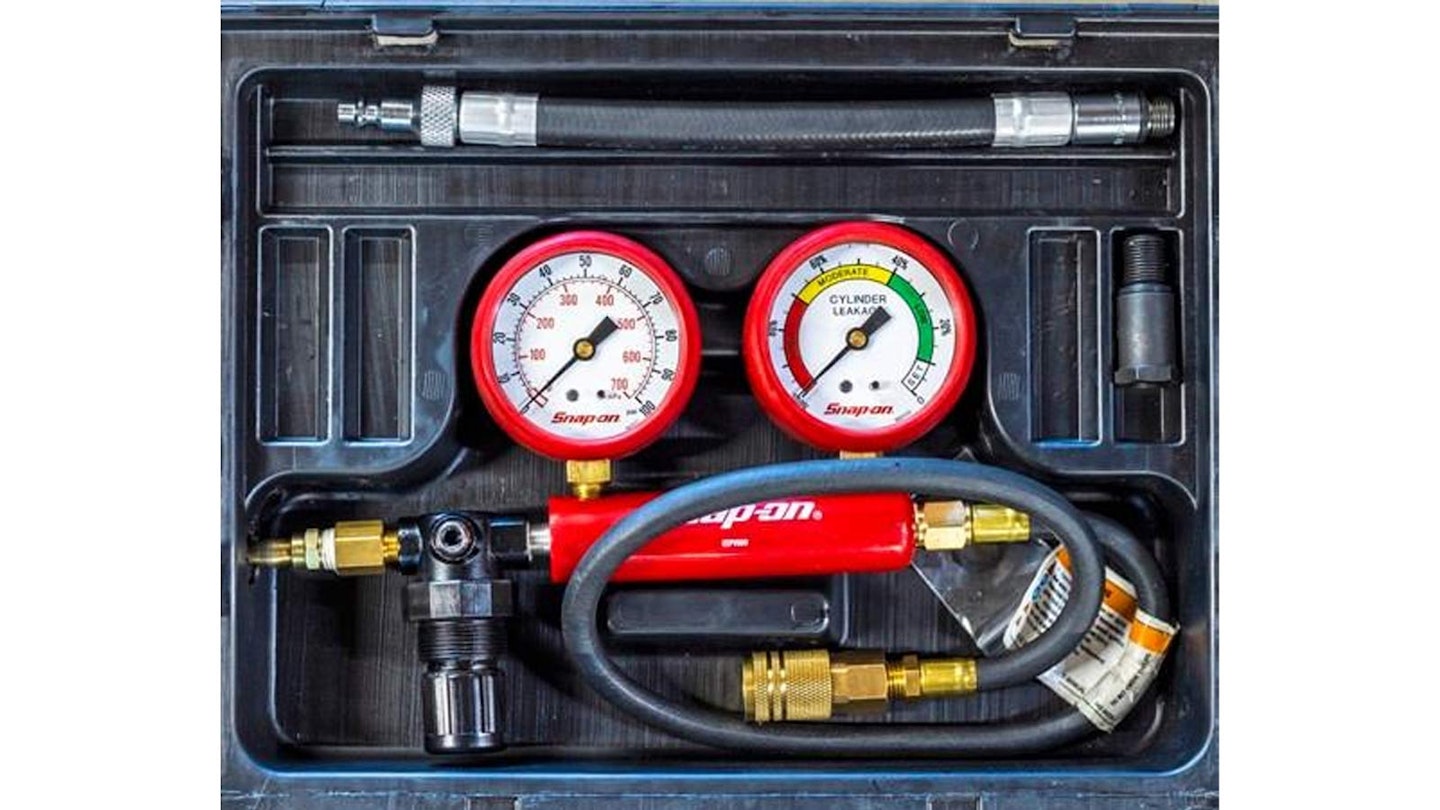
Snap-on leakdown tester
“This allows me to diagnose what’s wrong within an engine without having to take it apart. I can use it to detect whether an issue is with the valves, rings, pistons or other componentry. I had a cheap Chinese one before this, but it was useless – this Snap-on one is way more accurate. For £290, it was worth every penny.”
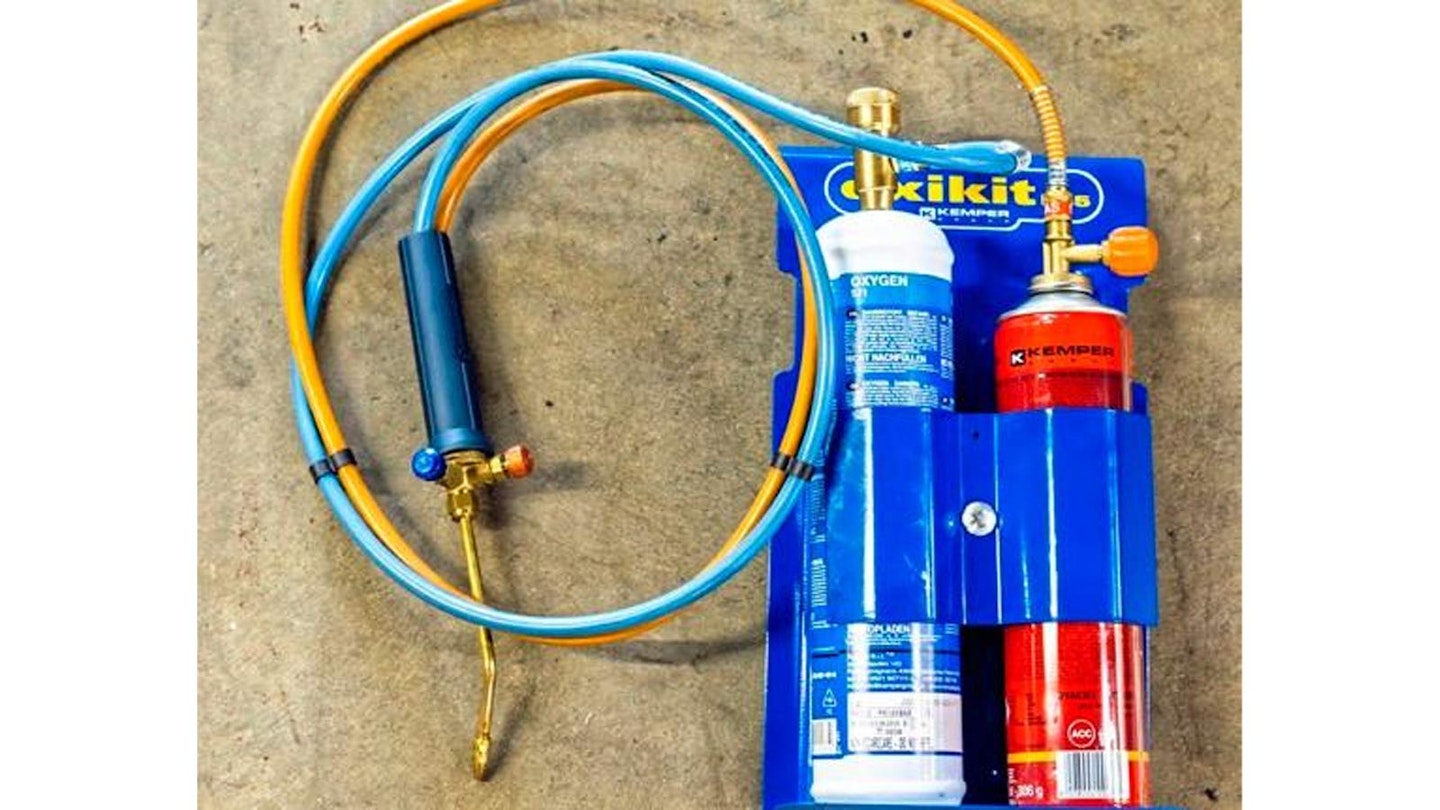
Oxikit
“Getting the exhaust nuts off an ’80s or ’90s bike can be a nightmare. They weld themselves in place through corrosion. With this, I can heat them cherry red and they simply screw off. It’s powerful enough to cut metal, too. I get about a year out of every gas bottle – and I use it a lot.”
